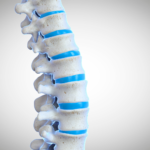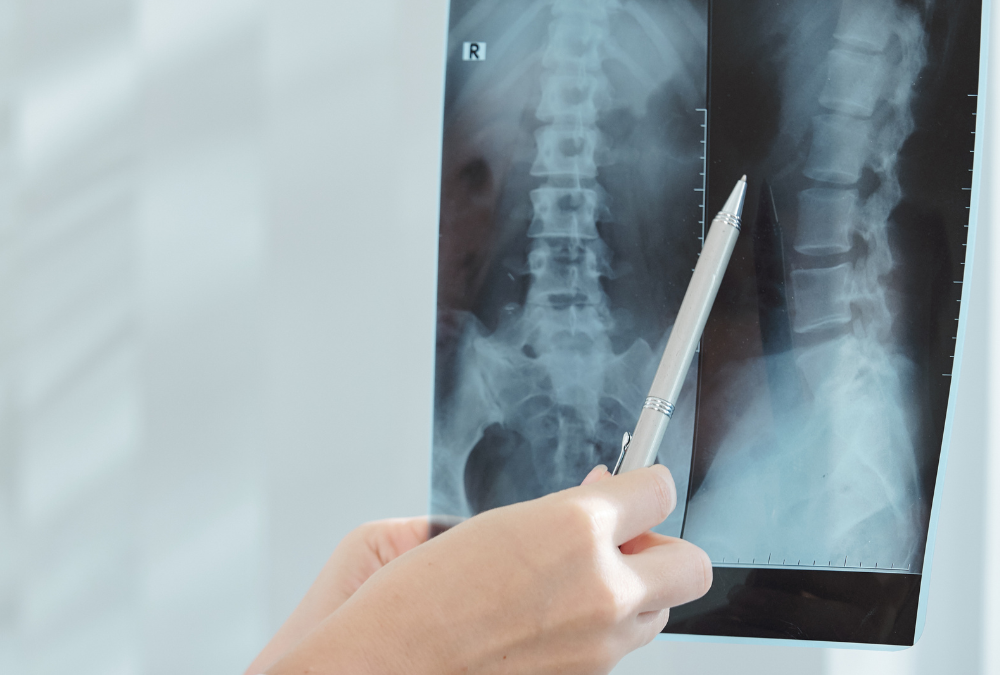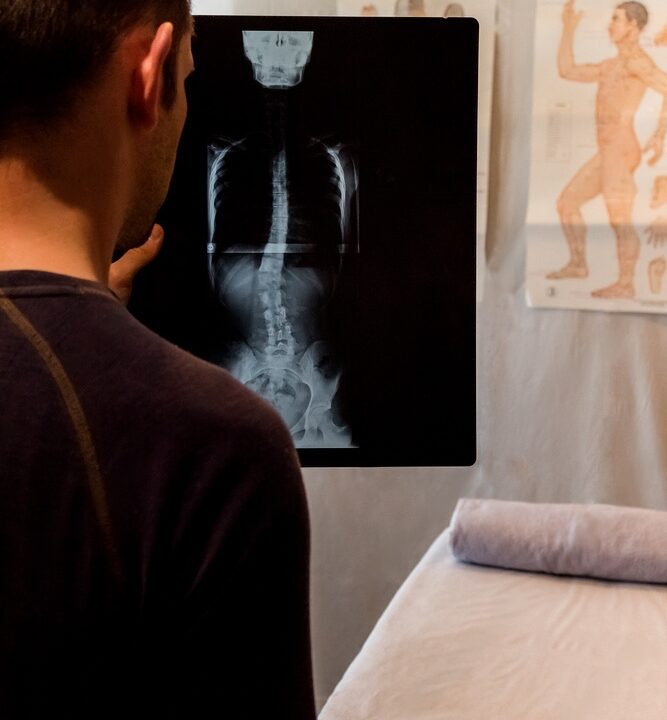
Revolutionizing Spinal Treatment: Kyphoplasty Through the Lens of Orthopedic Expertise
December 14, 2023
Inside the Joint: Navigating the Intricacies of Arthroscopy with Orthopedic Specialists
December 14, 2023Unlocking Mobility: The Role of Orthopedic Specialists in Laminectomy Procedures
In the realm of orthopedics, a laminectomy is a surgical procedure that involves the removal of a portion of the vertebral bone called the lamina. This procedure is typically performed by orthopedic specialists to alleviate pressure on the spinal cord or nerves, which can be caused by various conditions such as spinal stenosis, herniated discs, or tumors. The term “laminectomy” is derived from “lamina,” referring to the part of the vertebra that is removed, and “-ectomy,” a suffix in medical terminology that denotes removal.
The field of orthopedics is a specialized branch of medicine that focuses on the diagnosis, treatment, prevention, and rehabilitation of disorders, injuries, and diseases of the musculoskeletal system. This system includes bones, joints, ligaments, muscles, nerves, and tendons. Orthopedic specialists, therefore, play a crucial role in the management and treatment of musculoskeletal conditions, including those that may require a laminectomy.
Understanding the Anatomy of the Spine
The human spine, also known as the vertebral column, is a complex structure that serves as the main support for the body, allowing us to stand upright, bend, and twist. It also protects the spinal cord, a bundle of nerves that transmit signals between the brain and the rest of the body. The spine is composed of 33 individual bones stacked one on top of another, known as vertebrae.
Each vertebra is composed of several parts. The body of the vertebra is the large, round portion that forms the weight-bearing structure. The vertebral arch is formed by two pedicles and two laminae. The laminae are the flat parts of the vertebra that connect the spinous process (the bony projection off the back of each vertebra) to the area where the pedicles join the vertebral body. The space that is enclosed by the vertebral arch and the posterior part of the vertebral body is called the vertebral foramen, which forms the spinal canal that houses the spinal cord.
The Role of the Lamina
The lamina serves a protective role in the vertebral anatomy. It forms a roof over the spinal canal, shielding the spinal cord and nerve roots from damage. The lamina also provides a point of attachment for muscles and ligaments in the spine, contributing to the overall stability and flexibility of the spinal column.
However, certain conditions can cause the lamina to contribute to spinal problems. For instance, if the lamina thickens due to arthritis or other conditions, it can narrow the spinal canal, a condition known as spinal stenosis. This can put pressure on the spinal cord and nerve roots, leading to pain, numbness, or weakness in the limbs. In such cases, a laminectomy may be recommended to relieve these symptoms.
What is a Laminectomy?
A laminectomy, often referred to as decompression surgery, is a surgical procedure performed to relieve pressure on the spinal cord or nerves. This is achieved by removing the lamina, the part of the vertebra that covers the spinal canal. This creates more space for the nerves and can alleviate symptoms such as pain, numbness, or weakness caused by conditions like spinal stenosis or a herniated disc.
The procedure is performed under general anesthesia, meaning the patient is unconscious and does not feel pain during the surgery. The surgeon makes an incision in the back over the affected vertebrae and moves the muscles away from the spine. Using special instruments, the surgeon then removes the lamina and any other tissues that are causing pressure on the nerves. Once the pressure is relieved, the surgeon closes the incision.
Types of Laminectomy
There are several types of laminectomy procedures, each designed to address specific spinal conditions. The type of laminectomy performed depends on the location and nature of the problem.
A cervical laminectomy is performed on the neck (cervical spine) and is typically used to treat conditions like cervical spinal stenosis or cervical disc herniation. A lumbar laminectomy is performed on the lower back (lumbar spine) and is often used to treat lumbar spinal stenosis or lumbar disc herniation. A thoracic laminectomy is performed on the mid-back (thoracic spine) and is less common, but can be used to treat thoracic spinal stenosis or thoracic disc herniation.
Recovery and Rehabilitation
Recovery from a laminectomy can vary depending on the individual patient and the extent of the surgery. Some patients may be able to go home the same day, while others may need to stay in the hospital for a few days. Pain and discomfort in the initial days following the surgery are common and can be managed with medications.
Physical therapy is often recommended as part of the rehabilitation process to help patients regain strength and flexibility in the spine. This typically involves exercises to improve range of motion, stability, and endurance. The goal is to help patients return to their normal activities as safely and effectively as possible.
Role of Orthopedic Specialists in Laminectomy
Orthopedic specialists play a crucial role in the process of a laminectomy, from diagnosis to treatment to rehabilitation. These specialists have extensive training and expertise in the musculoskeletal system, including the spine. They are equipped with the knowledge and skills to diagnose conditions that may require a laminectomy, perform the surgery, and guide patients through the recovery process.
Orthopedic surgeons are the specialists who actually perform the laminectomy procedure. They have undergone additional training in surgical techniques and have a deep understanding of the anatomy and function of the spine. They are able to assess the patient’s condition, determine if a laminectomy is the appropriate treatment, and execute the procedure with precision and care.
Diagnosis and Preoperative Planning
Before a laminectomy can be performed, a thorough diagnosis and preoperative planning process must take place. This typically involves a comprehensive medical history, physical examination, and imaging tests such as X-rays, CT scans, or MRI. The orthopedic specialist uses this information to identify the source of the patient’s symptoms and determine if a laminectomy is the appropriate treatment.
Preoperative planning involves a detailed discussion with the patient about the procedure, potential risks and complications, and expected outcomes. The orthopedic specialist will also provide instructions for the patient to prepare for the surgery, such as stopping certain medications, arranging for help during the recovery period, and setting realistic expectations about the recovery process.
Postoperative Care and Rehabilitation
After the laminectomy, the orthopedic specialist plays a key role in postoperative care and rehabilitation. They monitor the patient’s recovery, manage pain and other postoperative symptoms, and guide the patient through the rehabilitation process. This may involve prescribing medications, recommending physical therapy, and providing instructions for at-home care.
Rehabilitation is a crucial part of the recovery process after a laminectomy. The orthopedic specialist will typically work with a team of physical therapists and other healthcare professionals to develop a personalized rehabilitation plan for the patient. This plan is designed to help the patient regain strength and flexibility in the spine, improve function, and return to their normal activities.
Conclusion
A laminectomy is a surgical procedure performed by orthopedic specialists to relieve pressure on the spinal cord or nerves. This procedure involves the removal of the lamina, a part of the vertebra that covers the spinal canal. It is used to treat conditions like spinal stenosis or herniated discs that cause symptoms such as pain, numbness, or weakness.
Orthopedic specialists play a crucial role in the process of a laminectomy, from diagnosis to treatment to rehabilitation. They have the knowledge and skills to diagnose conditions that may require a laminectomy, perform the surgery, and guide patients through the recovery process. Understanding the role of these specialists and the procedure itself can help patients make informed decisions about their treatment options.




